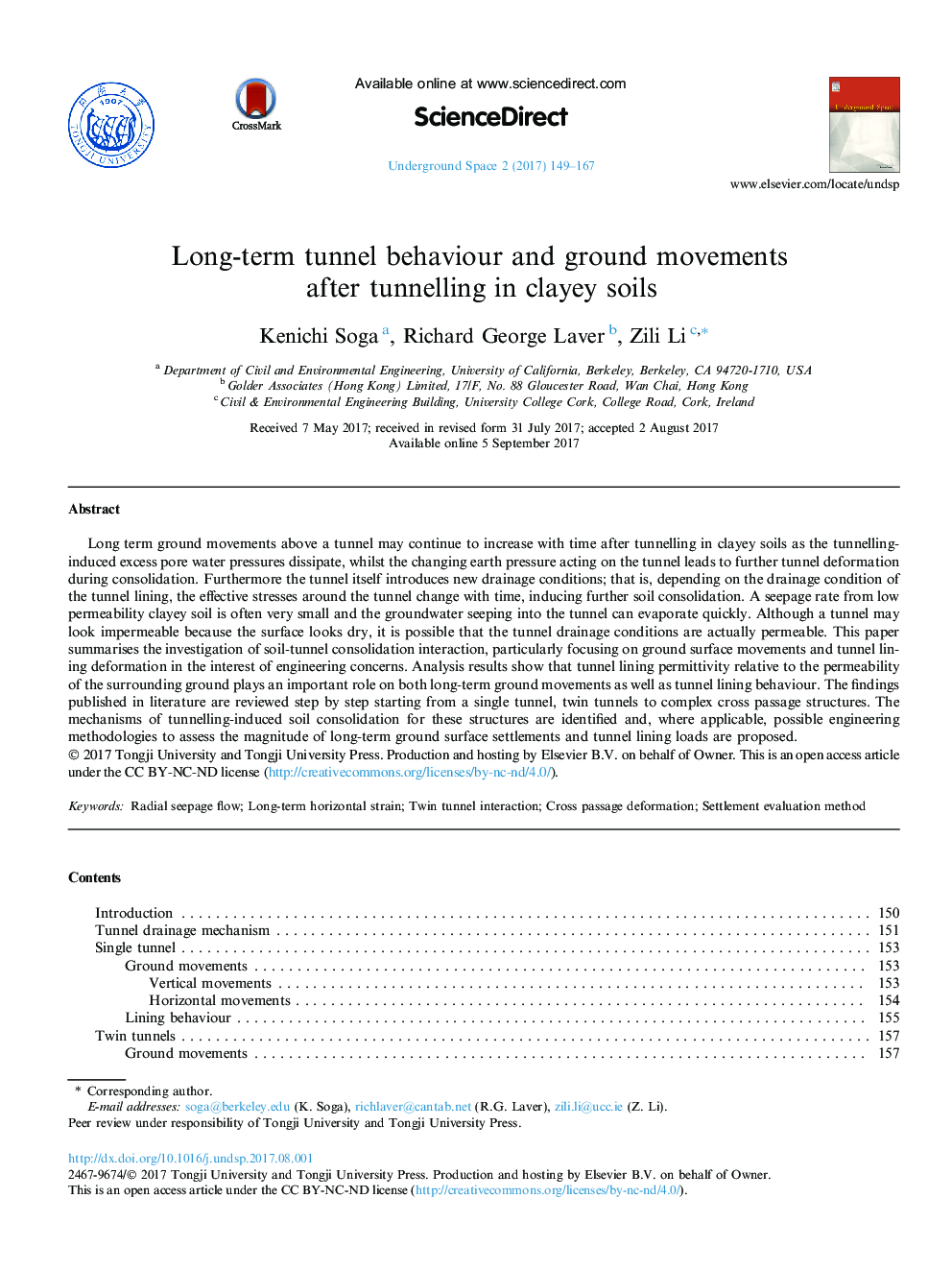| Article ID | Journal | Published Year | Pages | File Type |
|---|---|---|---|---|
| 6784393 | Underground Space | 2017 | 19 Pages |
Abstract
Long term ground movements above a tunnel may continue to increase with time after tunnelling in clayey soils as the tunnelling-induced excess pore water pressures dissipate, whilst the changing earth pressure acting on the tunnel leads to further tunnel deformation during consolidation. Furthermore the tunnel itself introduces new drainage conditions; that is, depending on the drainage condition of the tunnel lining, the effective stresses around the tunnel change with time, inducing further soil consolidation. A seepage rate from low permeability clayey soil is often very small and the groundwater seeping into the tunnel can evaporate quickly. Although a tunnel may look impermeable because the surface looks dry, it is possible that the tunnel drainage conditions are actually permeable. This paper summarises the investigation of soil-tunnel consolidation interaction, particularly focusing on ground surface movements and tunnel lining deformation in the interest of engineering concerns. Analysis results show that tunnel lining permittivity relative to the permeability of the surrounding ground plays an important role on both long-term ground movements as well as tunnel lining behaviour. The findings published in literature are reviewed step by step starting from a single tunnel, twin tunnels to complex cross passage structures. The mechanisms of tunnelling-induced soil consolidation for these structures are identified and, where applicable, possible engineering methodologies to assess the magnitude of long-term ground surface settlements and tunnel lining loads are proposed.
Related Topics
Physical Sciences and Engineering
Earth and Planetary Sciences
Geotechnical Engineering and Engineering Geology
Authors
Kenichi Soga, Richard George Laver, Zili Li,
